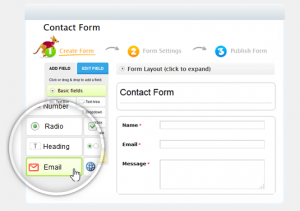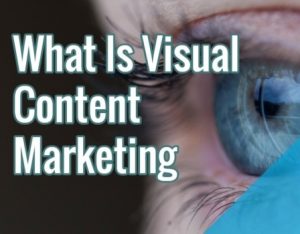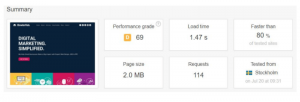
Is your business looking for leads? Are you hearing quotes of 40 to 60 dollars (or more!?) per qualified lead?
Have you considered using Facebook Ads for lead generation?
You should. And this article will tell you how. In fact, I’ll give you some tips and strategies that can earn you some of the cheapest leads your business has ever seen.
I’ll discuss how to optimize your Facebook Ads for lead generation. I’ll break down the top ten best practices for how to ensure your ads are engaged with, and then dive straight into four lead generation-specific strategies.
Before we get into the article, check out our little experiment. Here’s a video snapshot of “How to Generate Qualified Leads with Facebook Advertising” by our own Bree Nakatani:
Increasing your Facebook Ad’s Click-Through-Rate
I’ll give these best practices to you quickly so we can move on to the fun stuff. Write these 10 tips down and check them off as you create your own Facebook Ads.
Image best practices:
- Include a person (best practice is actually a smiling, relatable woman)
- The 2nd and 3rd-most successful ad images are babies and animals (this is pretty much true across all social media marketing platforms)
- Test an odd or funny image. These make Facebook users do a double-take and encourage them to read your headline and engage.
- Remember K.I.S.S. (Keep it Simple Stupid): Avoid complex images that Facebook users will just gloss over.
Headline Best Practice:
- Dollar and percentage signs, the word “Free”, and your Logo (if it’s well known) will attract the eye of Facebook users.
- Focus your headline on being eye-catching and communicating value. Your body copy will encourage a click and tell users what to do.
Color and Detail Best Practice:
- Don’t use blue or white, as these colors blend into the Facebook color scheme and users’ eyes will just skim over your ad.
- Instead, use orange, green and red: eye-catching, bright colors.
- Borders; If your logo or the image you want to use is blue, keep the same image but throw a colorful border around it.
- Borders, shadows (even increasing the yellow and green gamma on your image) can have an effect on your Facebook Ad’s click-through-rate. Remember the smallest details can have the greatest effect.
Now that your ads are getting clicks, we can get into the concrete strategies that result in a conversion.
Using a Lead-Generating Landing Page
Sending Facebook traffic from a Facebook Ad to a landing page optimized for lead generation is one of the best ways to find qualified leads that, if properly nurtured, are extremely likely to convert to a final sale.
There are two primary strategies for generating leads from a Facebook Ad and Landing Page combination.
#1. Contests
Contests are my favorite way to generate qualified leads likely to convert further down the sales funnel. However, it is essential that you optimize them intelligently and include the right kind of prize.
Here’s a five-step strategy for generating leads with a contest landing page and Facebook Ad:
- Create a Facebook Ad where your contest’s prize is front-and-center (dollar values, percent signs, etc).
- Target your ad exclusively at people likely to click on it (more on this later).
- Make your prize valuable, but not so valuable the reward isn’t worth it. I recommend gift cards, as anyone interested in any of your products will engage, and only people interested in your products.
- Create a contest-centered landing page, which requires Facebook users provide their email address (lead information) in order to enter.
- Run your Facebook contest and ad for 2-4 weeks before randomly choosing a winner.
Note: You will get more results with a cash prize or totally unrelated product. However, I strongly recommend against this. These kinds of leads are going to unsubscribe from your marketing emails as soon as the contest is over, whereas people who engage with a product-related prize are far more likely to stay engaged.
Would you rather have a list of 500 leads, 50% of whom will result in a final sale, or 1000 leads, 10% of whom will result in a final sale? (Do the math!)
#2. Email-Gated Content
Ebooks and other email-gated pieces of content are one of the best ways to earn leads.
It’s likely that you already create valuable content, whether it’s an ebook, a white-paper, a case study or a how-to-guide on selling your home. This content can directly influence a person’s, or a business’, revenue. They’re worth something in the real world.
So why don’t you ‘email-gate’ them?
Email-gating is the simple practice of asking a visitor to your website (or, to be more precise, your optimized landing page) for their email address before allowing them to download your valuable piece of content.
Here’s a five-step strategy for generating leads with an email-gate, landing page and Facebook Ad:
- Write four-six blog articles or case studies, with well-researched and valuable content
- Compile this content into an awesome ebook (PDF format) and upload it to your website
- Create an eye-catching image and Facebook Ad targeted at people who are likely to value your content (again, more on targeting in a second)
- Drive traffic to your website’s landing page, which describes how valuable the piece of content is and asks for a simple email-address to access it
- Segment the leads you generate from your email-gated landing page into people interested in that specific content, increasing the efficacy of your marketing emails in the future.
Note: Creating an ebook from existing content you’ve already published saves you time, energy, and increases your content marketing ROI.
I recommend you split test your Facebook Ad and landing page to see which strategies and formats your audience responds most to.
Targeting an Audience of Awesome Leads
At last we’re into the real nitty-gritty!
Facebook Ad targeting (I’ve mentioned it as essential a couple times above) is simply the part of this whole marketing strategy that makes it worth doing.
Facebook Ad targeting is what makes the ad ROI feasible and a good investment. An ad without intelligent targeting is an ad burning money for your business.
Facebook Ads can be targeted incredibly specifically – to the point of users who have recently sold a truck, or parents of children aged 0-3 (but not 4-7, 8-11, or 12-19). You can target people recently engaged, recently out of a relationship, or making a specific amount of money.
With intelligent Facebook Ad targeting you can find click-through-rates of around .1% (about what you get with a Google Ad side-bar ad). Don’t target it, however, and don’t come running to me when you’re seeing .01%.
There are a bunch of strategies I’ve discussed in the past for targeting your Facebook Ad, but here are the two I recommend for lead generation:
#1. Target by lookalike audience
For those unfamiliar with the lookalike audience, let me give you a quick breakdown.
Lookalike audiences (only available with the Chrome plugin Power Editor or 3rd Party Facebook Ad Platforms) takes your imported list of previous customers, and finds Facebook users similar to them.
Let me repeat that in case you weren’t listening: Facebook Ads can be targeted not only at your existing customers (through “custom audience” targeting) but by Facebook users who are incredibly similar to them in terms of shared demographics, shared interests and shared categories.
Lookalike audiences take “Friends of Fans” to a whole new level.
Here’s how you can do it for yourself:
- Take a list of your business’ current customers, leads, or CRM and import it into your Facebook Ads tool. This creates a custom audience.
- Click “create similar audience” when you have this audience highlighted. This matches the characteristics of the original list with Facebook users who are unfamiliar with your business but very similar to people who bought from you – users ripe for lead generation.
- Target a Facebook Ad promoting a contest or ebook at this lookalike audience.
Lookalike audience targeting increases the return you get on Facebook Ads substantially, as A) You’re only targeting a small group of very specific users (meaning your Cost-per-Click or Cost-per-Impression is very low) and B) The high click-through-rates per 1000 views mean more conversions for every dollar spent.
Sold?
#2. Target by Precise and Broad Category Interest
Another strategy for Facebook Ad targeting is by Interest and Category. This works by segmenting Facebook users based on their stated Interests, Likes, and changes on their timeline or in their profile. You can then target these segments with a Facebook Ad.
Here’s an example:
Let’s say you’re promoting an email-gated ebook (on A/B Testing) to generate qualified leads.
Targeting Facebook users by Precise Interest might look like this:

The Math:
- Setting your ad budget at 30 dollars per day, and paying by impression, will result in about 50 clicks on your Facebook Ad.
- Driving this traffic to an optimized landing page that is converting at 20% will result in 10 leads per day.
- This results in only $3 per qualified lead, around a 20th the cost of outsourcing your lead generation.
Now let’s say that you’re an up-and-coming maternity apparel company, and you are running an online sweepstakes contest to generate some buzz online. You decide to give away your own products, valued at 200 dollars.
If you’re a brick-and-mortar place, target demographically by region as well as by gender. Then, target by broad category interest.
Targeting Facebook users by Broad Category Interest could look like this:

If you decided to also throw in some baby-supplies, you can also target people with children between 0 and 3 (yes, Facebook Ads can get this specific).
Both interest targeting strategies ensure your ad is only seen by people likely to click on it. Remember that any time somebody sees your ad who isn’t likely to click on it you’re wasting money. Facebook calculates your ad cost by the number of people who see it. Targeting makes sure those people are the right people.
Top Tip: Once you’ve generated a solid list of leads from your email-gated ebook or online contest, import that list as a custom audience, and then find users similar to it with a lookalike audience. And start the whole process over again!
Conclusion
Hopefully you now have a few ideas of how Facebook Ads can work to generate your business leads at an extremely affordable rate.
If you’re not sure you’re getting the most bang for your buck with your leads, check out my colleague’s article “10 Steps to Email Automation Success”.
And for other best practices about Facebook Ad design as well as targeting, check out my own Complete Guide to Facebook Ads Ebook (just to let you know, it’s email-gated!)
By James Scherer
Read more on Business 2 Community
(544)
Report Post







